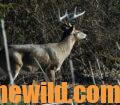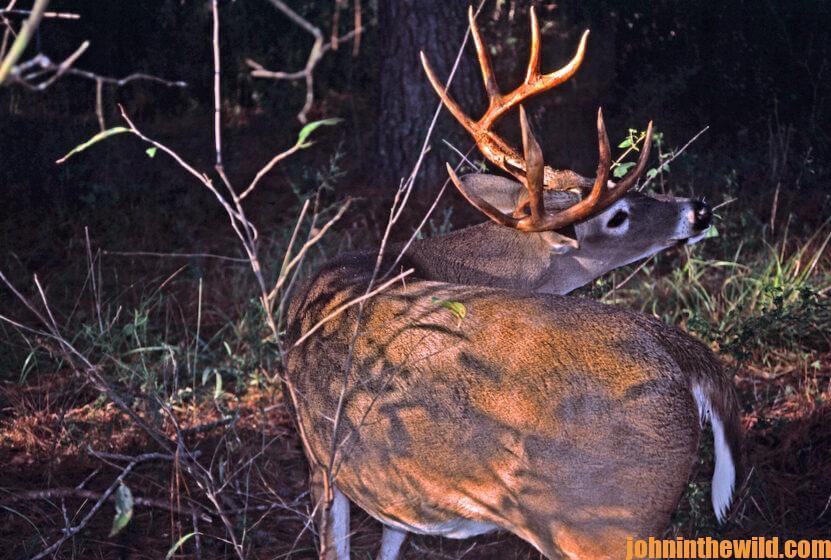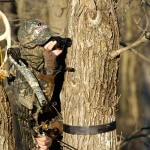Editor’s Note: Deer sign sometimes lies to hunters. If you could trust all deer sign, you’d bag a buck near every deer sign you find in the woods. But how do you know when deer sign lies, and when it tells the truth? How can you tell if the deer has made the sign during the day or the night, today or three weeks ago? To hunt deer successfully, you must not only find deer sign – you must interpret correctly what that sign tells you.
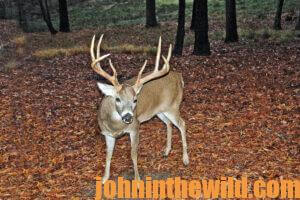 Dr. Bob Sheppard of Tuscaloosa, Alabama, not only teaches bowhunting, he considers himself a student of the sport. “Some years ago when I hunted, I would see a big buck early in the morning each day,” says Sheppard. “The deer would stand on the left side of the road as I approached a bridge and left the camp for my hunting site. I scouted the area and found a swamp chestnut tree where I thought the buck was feeding. But after three days of hunting, I never saw the buck. I decided the buck had to be feeding at the tree at night and then leaving at first light to return to his bedding area. Since I was hunting this tree on the right side of the road, and I saw the buck on the left side, I figured he was coming away from the tree each time I saw him in the daylight.”
Dr. Bob Sheppard of Tuscaloosa, Alabama, not only teaches bowhunting, he considers himself a student of the sport. “Some years ago when I hunted, I would see a big buck early in the morning each day,” says Sheppard. “The deer would stand on the left side of the road as I approached a bridge and left the camp for my hunting site. I scouted the area and found a swamp chestnut tree where I thought the buck was feeding. But after three days of hunting, I never saw the buck. I decided the buck had to be feeding at the tree at night and then leaving at first light to return to his bedding area. Since I was hunting this tree on the right side of the road, and I saw the buck on the left side, I figured he was coming away from the tree each time I saw him in the daylight.”
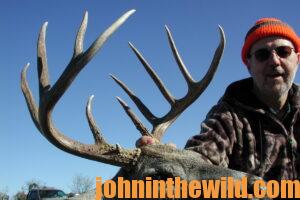 Sheppard decided to leave the feeding site and try to take the buck along his trail to the swamp chestnut. But he couldn’t find the deer’s trail. “From the sign I could locate, the buck apparently fell out of the sky, fed and then went back into the sky,” Sheppard comments. “I did pinpoint a small creek on the edge of the feeding area and one of the trails that went into the creek. I finally decided that the buck waded down the creek to get to the nut tree and then waded back up the creek to leave. Now all I had to do was find out where the buck was entering the water.”
Sheppard decided to leave the feeding site and try to take the buck along his trail to the swamp chestnut. But he couldn’t find the deer’s trail. “From the sign I could locate, the buck apparently fell out of the sky, fed and then went back into the sky,” Sheppard comments. “I did pinpoint a small creek on the edge of the feeding area and one of the trails that went into the creek. I finally decided that the buck waded down the creek to get to the nut tree and then waded back up the creek to leave. Now all I had to do was find out where the buck was entering the water.”
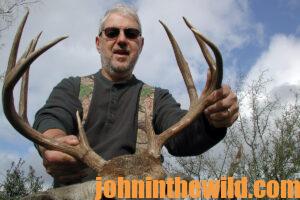 Sheppard followed the creek back to the road where he’d seen the buck. Instead of walking over the bridge, he remained on the edge of the creek bank and went under the bridge. “That’s where I found the deer’s trail,” Sheppard reports. “The deer apparently would come out of the woods, walk under the bridge, enter the water and then go feed at the nut tree. When I followed this trail back into the woods, I saw a small clearing where I could set-up my tree stand to watch the buck after he left the feeding tree. The next morning, I climbed into my tree stand before daylight and bagged that buck.”
Sheppard followed the creek back to the road where he’d seen the buck. Instead of walking over the bridge, he remained on the edge of the creek bank and went under the bridge. “That’s where I found the deer’s trail,” Sheppard reports. “The deer apparently would come out of the woods, walk under the bridge, enter the water and then go feed at the nut tree. When I followed this trail back into the woods, I saw a small clearing where I could set-up my tree stand to watch the buck after he left the feeding tree. The next morning, I climbed into my tree stand before daylight and bagged that buck.”
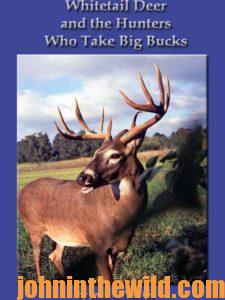 To learn more about hunting deer, check out John E. Phillips’ book, “Whitetail Deer and the Hunters Who Take Big Bucks,” available in Kindle, print and Audible at http://amzn.to/2bYwYOK. You may have to copy and paste this link into your browser. (When you click on this book, notice on the left where Amazon says you can read 10% of this book for free and hear 10% for free). On the right side of the page and below the offer for a free Audible trial, you can click on Buy the Audible book. To see more of John’s deer-hunting books, visit http://www.amazon.com/author/johnephillips. John and Denise Phillips’ new book, “The Recipes You Can’t Live Without,” that’s full of delicious, time-tested recipes for cooking wild game and fish and also ideas for breakfasts at your hunting club just was published in print this past week. Go to https://www.amazon.com/dp/B09MYTMSMH?ref_=pe_3052080_397514860 to learn more.
To learn more about hunting deer, check out John E. Phillips’ book, “Whitetail Deer and the Hunters Who Take Big Bucks,” available in Kindle, print and Audible at http://amzn.to/2bYwYOK. You may have to copy and paste this link into your browser. (When you click on this book, notice on the left where Amazon says you can read 10% of this book for free and hear 10% for free). On the right side of the page and below the offer for a free Audible trial, you can click on Buy the Audible book. To see more of John’s deer-hunting books, visit http://www.amazon.com/author/johnephillips. John and Denise Phillips’ new book, “The Recipes You Can’t Live Without,” that’s full of delicious, time-tested recipes for cooking wild game and fish and also ideas for breakfasts at your hunting club just was published in print this past week. Go to https://www.amazon.com/dp/B09MYTMSMH?ref_=pe_3052080_397514860 to learn more.
Tomorrow: Learn Why Deer Sign Lies


